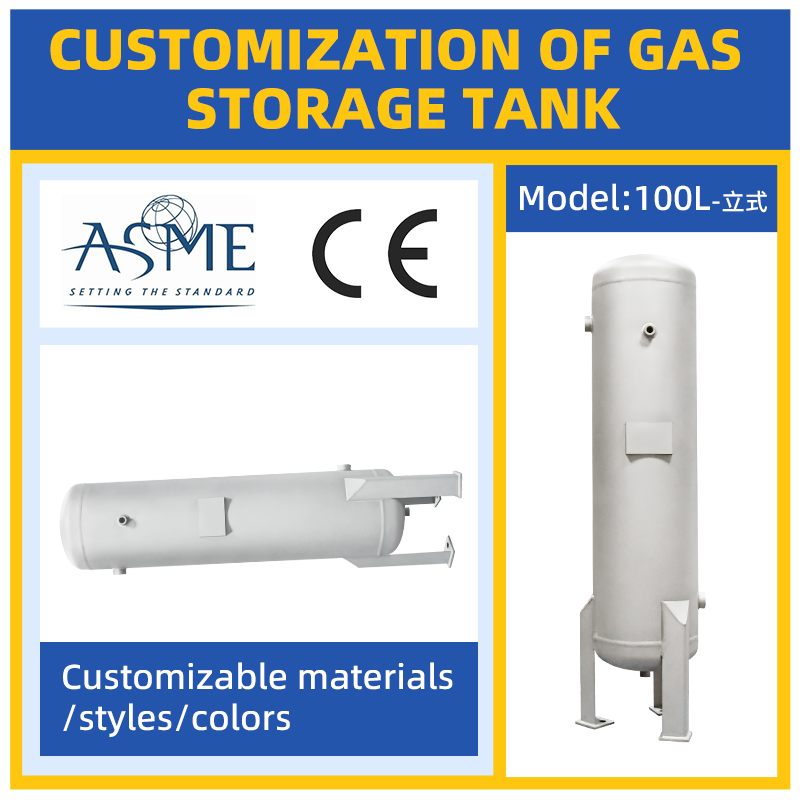Lufttankarna i Polen
De stora fördelarna med läge, kostnadseffektiv arbetskraft och välutvecklad supply chain har gjort Polen till en het fläck för tillverkning inom EU. Utvecklingen av små industriella lufttankar (inklusive tryckluftstankar och industrigastankar/dewars) är nära knuten till de politiska och ekonomiska systemen.
1. Socialistisk period (slutet av andra världskriget till 1989)
Polen etablerade ett tungindustriellt system baserat på sovjetmodellen. Tryckluft och industriella gaser (såsom syre och acetylen) var avgörande för branscher som metallurgi, maskintillverkning och skeppsbyggande. Konstruktions- och tillverkningsstandarder för lufttankar följde sovjetiska GOCT-standarder. Lufttankar (särskilt tryckluftstankar) var främst tillverkade av kolstål , robust och kraftig, endast grundläggande säkerhetsstandarder och låg nivå av automatisering. Industriska gaser producerades främst av statliga tillverkare och transporterades och lagrades i högtryckstankar i stål tillverkade enligt sovjetiska standarder. Utrustning för gaslagring och gaserna själva fördelades enligt plan, främst till viktiga statliga företag. Små privata företag eller verkstäder hade svårt att få tag i dem. Tillverkning av lufttankar monopoliserades av ett fåtal statliga lufttank fabriker, vilket resulterade i ett begränsat produktsortiment, liten yttre konkurrens och långsam teknikutveckling.
2. 1990-talet till 2004
Marknadsöppningen förde med sig avancerad teknik och produkter från Västeuropa, statliga företag privatiserades och ett stort antal nya privata små och medelstora företag såg dagens ljus. Detta ledde till en kraftig ökning av efterfrågan på tryckluftskompressorer och industriella gaser. Tryckluftskompressorer från västeuropeiska märken som Tyskland och Italien, tillsammans med luftbehållare, tog snabbt fart på den polska marknaden. Dessa luftbehållare uppfyllde EU:s tryckutrustningsdirektiv och var säkrare och effektivare. Polska tillverkare av luftbehållare fick betydande konsekvenser. För att överleva började de anpassa sig till västeuropeiska standarder, förbättrade sina produktionsprocesser, försökte leverera produkter till lågkostnadsmarknaden eller blev OEM-tillverkare för västeuropeiska märken. Under denna period använde polska fabriker både gamla sovjetiska luftbehållare och helt nya västeuropeiska luftbehållare.
3. Sedan 2004
Polen gick med i EU, vilket innebär att Polen måste fullt ut anta EU:s regler, inklusive tryckanordningsdirektivet. Det höjer säkerhets- och kvalitetskraven för luftbehållare på den polska marknaden avsevärt. Polska tillverkare av luftbehållare måste strikt följa CE-certifiering. På grund av lägre arbetskostnader och förbättrad hantverkskunskap har Polens tillverkning av luftbehållare återfått sin konkurrenskraft. Många polska tillverkare av luftbehållare levererar inte bara till den inhemska marknaden utan exporterar även högkvalitativa komprimerade luftbehållare till Västeuropa. Polen har blivit en viktig industriell tillverkningsbas för luftbehållare i Central- och Östeuropa. Tillverkare av luftbehållare använder alltmer rostfritt stål för lufttankar. Marknaden är tydligt segmenterad, till exempel är oljefria kompressortankar i rostfritt stål särskilt utformade för livsmedels- och läkemedelsindustrin, korrosionsbeständiga lufttankar används inom kemisk industri. Gasförsäljningsalternativ blir också allt mer flexibla. Små värmekärl för flytande kväve/flytande argon blir dessutom allt mer populära bland polska små och medelstora fabriker.
Idag kan man se lufttankar från polska tillverkare i alla moderna fabriker i Polen. De uppfyller de strängaste EU-standarderna och kan vara utrustade med smarta sensorer, vilket tydligt visar den betydande omvandling som den polska industrin genomgått under de senaste tre decennierna.




